With new technologies revolutionizing data collection, wildlife researchers are becoming increasingly able to collect data at much higher volumes than ever before. Now we are facing the challenges of putting this information to use, bringing the science of big data into the conservation arena. With the help of machine learning tools, this area holds immense potential for conservation practices. The applications range from online trafficking alerts to species-specific early warning systems to efficient movement and biodiversity monitoring and beyond.
However, the process of building effective machine learning tools depends upon large amounts of standardized training data, and conservationists currently lack an established system for standardization. How to best develop such a system and incentivize data sharing are questions at the forefront of this work. There are currently multiple AI-based conservation initiatives, including Wildlife Insights and WildBook, that are pioneering applications on this front.
This group is the perfect place to ask all your AI-related questions, no matter your skill level or previous familiarity! You'll find resources, meet other members with similar questions and experts who can answer them, and engage in exciting collaborative opportunities together.
Just getting started with AI in conservation? Check out our introduction tutorial, How Do I Train My First Machine Learning Model? with Daniel Situnayake, and our Virtual Meetup on Big Data. If you're coming from the more technical side of AI/ML, Sara Beery runs an AI for Conservation slack channel that might be of interest. Message her for an invite.
Header Image: Dr Claire Burke / @CBurkeSci

Explore the Basics: AI
Understanding the possibilities for incorporating new technology into your work can feel overwhelming. With so many tools available, so many resources to keep up with, and so many innovative projects happening around the world and in our community, it's easy to lose sight of how and why these new technologies matter, and how they can be practically applied to your projects.
Machine learning has huge potential in conservation tech, and its applications are growing every day! But the tradeoff of that potential is a big learning curve - or so it seems to those starting out with this powerful tool!
To help you explore the potential of AI (and prepare for some of our upcoming AI-themed events!), we've compiled simple, key resources, conversations, and videos to highlight the possibilities:
Three Resources for Beginners:
- Everything I know about Machine Learning and Camera Traps, Dan Morris | Resource library, camera traps, machine learning
- Using Computer Vision to Protect Endangered Species, Kasim Rafiq | Machine learning, data analysis, big cats
- Resource: WildID | WildID
Three Forum Threads for Beginners:
- I made an open-source tool to help you sort camera trap images | Petar Gyurov, Camera Traps
- Batch / Automated Cloud Processing | Chris Nicolas, Acoustic Monitoring
- Looking for help with camera trapping for Jaguars: Software for species ID and database building | Carmina Gutierrez, AI for Conservation
Three Tutorials for Beginners:
- How do I get started using machine learning for my camera traps? | Sara Beery, Tech Tutors
- How do I train my first machine learning model? | Daniel Situnayake, Tech Tutors
- Big Data in Conservation | Dave Thau, Dan Morris, Sarah Davidson, Virtual Meetups
Want to know more about AI, or have your specific machine learning questions answered by experts in the WILDLABS community? Make sure you join the conversation in our AI for Conservation group!
- 0 Resources
- 0 Discussions
- 1 Groups
I am a conservation technology advisor with New Zealand's Department of Conservation. I have experience in developing remote monitoring tech, sensors, remote comms and data management.
- 0 Resources
- 0 Discussions
- 15 Groups
- 0 Resources
- 6 Discussions
- 4 Groups
- @daviana
- | she/her
PhD student at Stanford University studying marine migratory species and human-wildlife interactions through biologging, remote sensing, and participatory science.
- 0 Resources
- 0 Discussions
- 3 Groups
- @lhughey
- | she/her
Smithsonian Conservation Biology Institute
I am an ecologist and program manager with experience leading collaborative research projects in international settings. I specialize in the application of animal tracking data to conserve migratory species on a changing planet.



- 6 Resources
- 10 Discussions
- 3 Groups
- @eliminatha
- | she
Passionate wildlife researcher dedicated to uncovering the secrets of the natural world via the lens of camera traps. With a sharp eye for detail and a strong commitment to wildlife conservation.
- 3 Resources
- 0 Discussions
- 5 Groups
Experienced Biologist with a Master of Science degree and 15 years of international experience in the fields of nature resource management, ecological restoration, and human rights in agriculture, forestry, and cattle ranching for sustainable production and sourcing
- 0 Resources
- 0 Discussions
- 5 Groups
PhD student
- 0 Resources
- 0 Discussions
- 5 Groups
- @bluevalhalla
- | he/him
BearID Project & Arm
Developing AI and IoT for wildlife





- 0 Resources
- 45 Discussions
- 8 Groups
- @erinconnolly
- | She/her
University College London (UCL)
PhD Student at UCL's People and Nature Lab. Studying human-livestock-wildlife coexistence in the Greater Maasai Mara Ecosystem, Kenya.
- 0 Resources
- 0 Discussions
- 8 Groups
- @KPropp
- | She,her,hers
High-energy conservation leader, project manager, and science communicator.
- 0 Resources
- 0 Discussions
- 3 Groups
- @KellyFaller
- | she/her/hers
Rutgers University
Lead Estuary Science Coordinator at the Partnership for the Delaware Estuary and Masters Student at Rutgers University in the Department of Ecology and Evolution. Using bioacoustics in tidal marsh ecosystems for restoration and conservation.

- 0 Resources
- 3 Discussions
- 14 Groups
New paper - "acoupi integrates audio recording, AI-based data processing, data management, and real-time wireless messaging into a unified and configurable framework. We demonstrate the flexibility of acoupi by...
7 February 2025
Careers
Strategic Protection Of Threatened Species (NGO) is looking for engineering interns at the Dinokeng Game Reserve, South Africa
6 February 2025
Live and work in sunny San Diego for the summer, contributing to engineering projects as they relate to conservation technology.
6 February 2025
The Conservation Technology Laboratory within the Population Sustainability department is seeking two fellows for summer 2025
5 February 2025
Are you a data scientist interested in developing AI to help wildlife conservation?
3 February 2025
Key Conservation is seeking an experienced Software Developer to join our team.
28 January 2025
Arribada is looking for a proactive Senior Firmware & Systems Engineer to join Arribada's experienced and passionate team of field conservationists and engineers. You will write and develop firmware and advise on...
15 January 2025
The Department of Wildlife, Fish, and Environmental Studies (WFE), SLU, Umeå, is looking for a postdoc with strong interests in wildlife conservation technology.
15 January 2025
I am thrilled to share that we are hiring for an AI Innovation Manager to help us build out CI's Nature Tech & Innovation Portfolio. You don't need to be a software engineer or AI expert to apply! We are seeking an...
7 January 2025
We are seeking a highly motivated person with an excellent academic record, a good understanding of ecology and/or conservation and an interest in contributing to cutting-edge research on kākā conservation
6 January 2025
Careers
Seeking a highly motivated person with an excellent academic record, a good understanding of artificial intelligence and computer vision/deep learning, and an interest in contributing to cutting-edge AI research on kākā...
6 January 2025
A PhD opportunity for anyone interested in coastal drone surveys, seaweeds, climate change and the chance to do a whole bunch of different computer modelling including AI-driven species distribution modelling to assess...
30 December 2024
June 2025
event
July 2025
October 2025
event
event
February 2025
event
January 2025
event
73 Products
Recently updated products
16 Products
Recently updated products
| Description | Activity | Replies | Groups | Updated |
|---|---|---|---|---|
| Hello WalterThanks for your input. I have achieved better results with the puc when hooking it up to a powerbank. Have got them set up to "recording only", and GPS to low power... |
|
Acoustics, AI for Conservation, Citizen Science, Sensors | 5 months ago | |
| great, this security cameras might be interesting for monitoring crop development and maybe other bigger pests like boars or some other herbivorous animals that could eventually... |
|
AI for Conservation, Camera Traps | 5 months ago | |
| In a recent call with researchers in Thailand. They have mentioned that they use passive chip readers to log data about chipped animals as they pass by. |
+12
|
AI for Conservation, Animal Movement | 5 months 1 week ago | |
| Seems like we should include some rotations in our image augmentations as the real world can be seen a bit tilted - as this cropped corner view from our fisheye at the zoo shows. |
+13
|
AI for Conservation, Camera Traps, Data management and processing tools | 5 months 1 week ago | |
| Bird Monitoring Data Exchange is a standard often used for birds data. |
+4
|
AI for Conservation, Data management and processing tools, Emerging Tech | 5 months 3 weeks ago | |
| Hey everyone!As you might have heard, BlueSky is on hype now, with millions of users migrating to it from X. Including the scientific world... |
|
AI for Conservation | 5 months 3 weeks ago | |
| Hi Zhongqi! We are finalizing our modelling work over the next couple of weeks and can make our work availabile for your team. Our objective is to create small (<500k... |
|
AI for Conservation, Camera Traps, Software Development | 6 months ago | |
| Hats off to your team for this absolute game-changing technology! We rescue stray and wild animals in Taiwan, and the bulk of our work is saving animals maimed by wire snares... |
+37
|
AI for Conservation, Drones, Emerging Tech, Human-Wildlife Conflict, Wildlife Crime | 6 months ago | |
| There's quite a few diy or prototype solutions described online and in literature - but it seems none of these have made it to market yet as generally available fully usable... |
|
AI for Conservation, Camera Traps, Human-Wildlife Conflict, Sensors | 6 months ago | |
| As others have said, pretty much all image models at least start with general-subject datasets ("car," "bird," "person", etc.) and have to be refined to work with more precision... |
+20
|
AI for Conservation, Camera Traps | 6 months 1 week ago | |
| This is a thread for anyone who has questions about AI for Conservation Office Hours 2025.We're once again teaming up with Dan Morris from... |
|
Acoustics, AI for Conservation, Camera Traps, Community Base, Geospatial | 6 months 1 week ago | |
| One thing I love about software is that in an ever-changing landscape of languages, frameworks, and tools, you can never stop learning.... |
|
Software Development, AI for Conservation | 6 months 1 week ago |
Christmas wish list
16 December 2024 11:22am
16 December 2024 1:33pm
Yes, I have these. I'm pretty sure that my company is the first company in the world to sell products running on Raspberry Pi 5 in secure boot mode as well :-)
I responded to your wish list. From your description a modified camera like a HIKvision turret might be able to do it for you.
16 December 2024 2:24pm
great, this security cameras might be interesting for monitoring crop development and maybe other bigger pests like boars or some other herbivorous animals that could eventually go into the fields, but this is not what I'm trying to solve now. What I also have interest in is on the go weeds species monitoring, like on a robot, to create a high resolution map of weed infestation in a field (10-20 hectares). There eventually such modified camera could make sense. Thanks for the ideas!!
Postdoc on camera trapping, remote sensing, and AI for wildlife studies
16 December 2024 9:52am
Tracking orangutans
29 October 2024 3:15pm
6 December 2024 12:59pm
Depending on what you really need, you might have different options. I don't think collar/bracelet for great apes is currently resolved reliably, and could pose risks to the animals. Implantable transmitters are one option but more invasive. I think Chris Walzer (currently at WCS) has done some initial work on implanting orangutans (or gibbons), but that was quite some years ago. Others might have done it since as well. FWIW we have implanted captive chimpanzees with subcutaneous transmitters for other reasons and some have removed/damaged it, so that's a risk. Intraabdominal might be another (though even more invasive) option.
Is visual observation an option? This is well used in many species, though might be very costly/labour intensive. I have been involved in a project with howler and spider monkey where this has been used successfully, happy to put you in touch with them.
If your questions is primarily absence/presence of certain individuals, you could also try DNA based methods? And someone suggested below individual ID from video/pictures, this has been done in captive great apes, so it is an option, but you still need to get the shots in the first instance, so probably not many advantages over manual monitoring methods.
10 December 2024 6:46am
Our city-neighbours Robotto are a Drone AI-software company and have an ongoing animal tracking projects in Thailand, Australia, and Greenland (probably more by now) in co-op with WWF, using drones.
Give them a look! I know Kenneth, their CEO, pretty well so can match you two.
A rough explanation of how the tracking process happens is:
A forest ranger brings a suitcase with a drone to a watchpoint, pilots the drone around the area for 30-50 minutes while monitoring detections real-time on the provided screen.
Have seen it live in Thailand, it was impressive! :)
13 December 2024 3:44am
In a recent call with researchers in Thailand. They have mentioned that they use passive chip readers to log data about chipped animals as they pass by.
AI Researcher / Doctoral Candidate
11 December 2024 1:45pm
Mirror images - to annotate or not?
5 December 2024 8:32pm
7 December 2024 3:18pm
I will send you a DM on LinkedIn and try to find a time to chat
8 December 2024 12:36pm
I made a few rotation experiements with MD5b.
Here is the original image (1152x2048) :
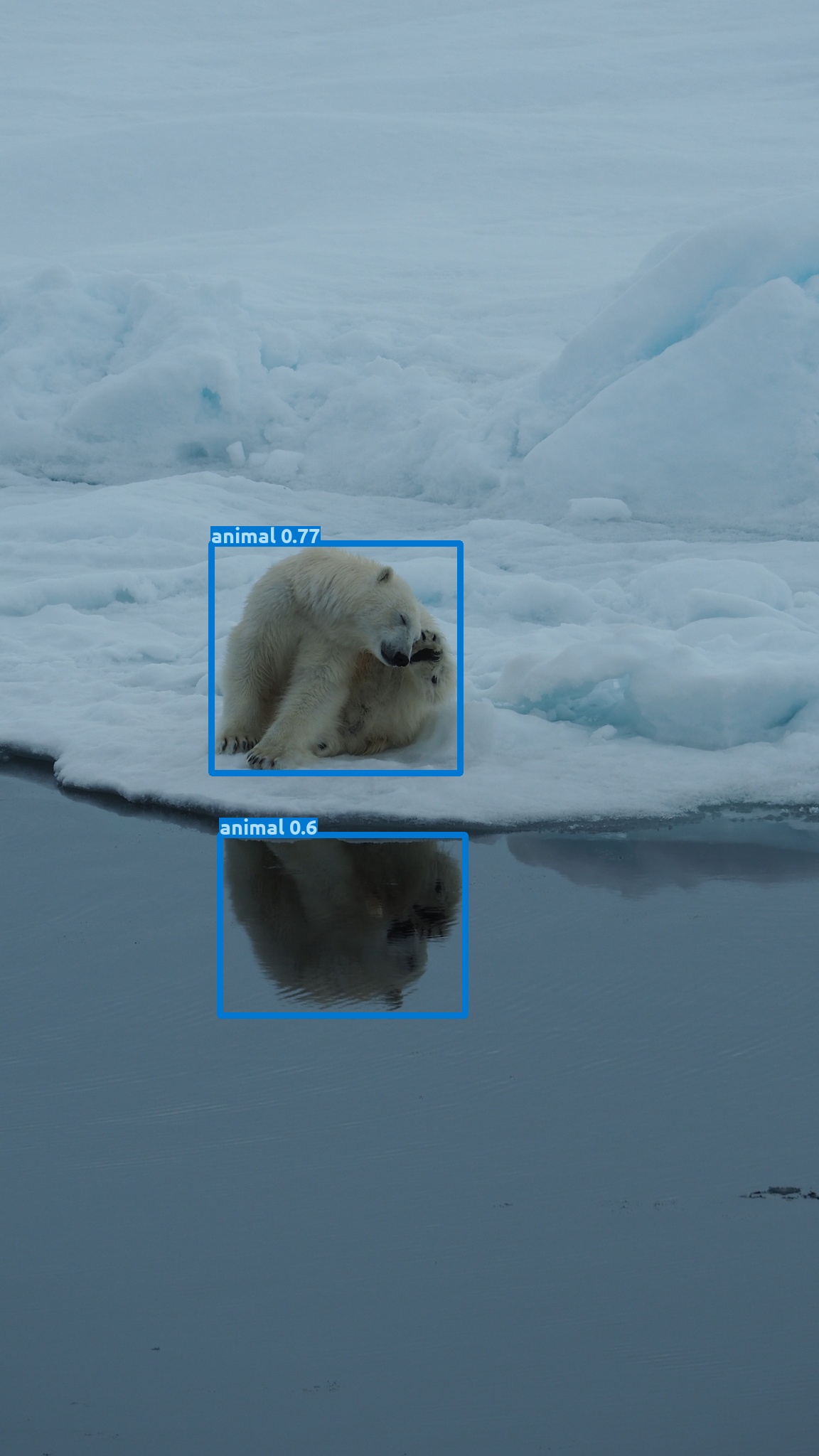
When saving this as copy in photoshop, the confidence on the mirror image changes slightly:

and when just cropping to a (1152*1152) square it changes quite a bit:
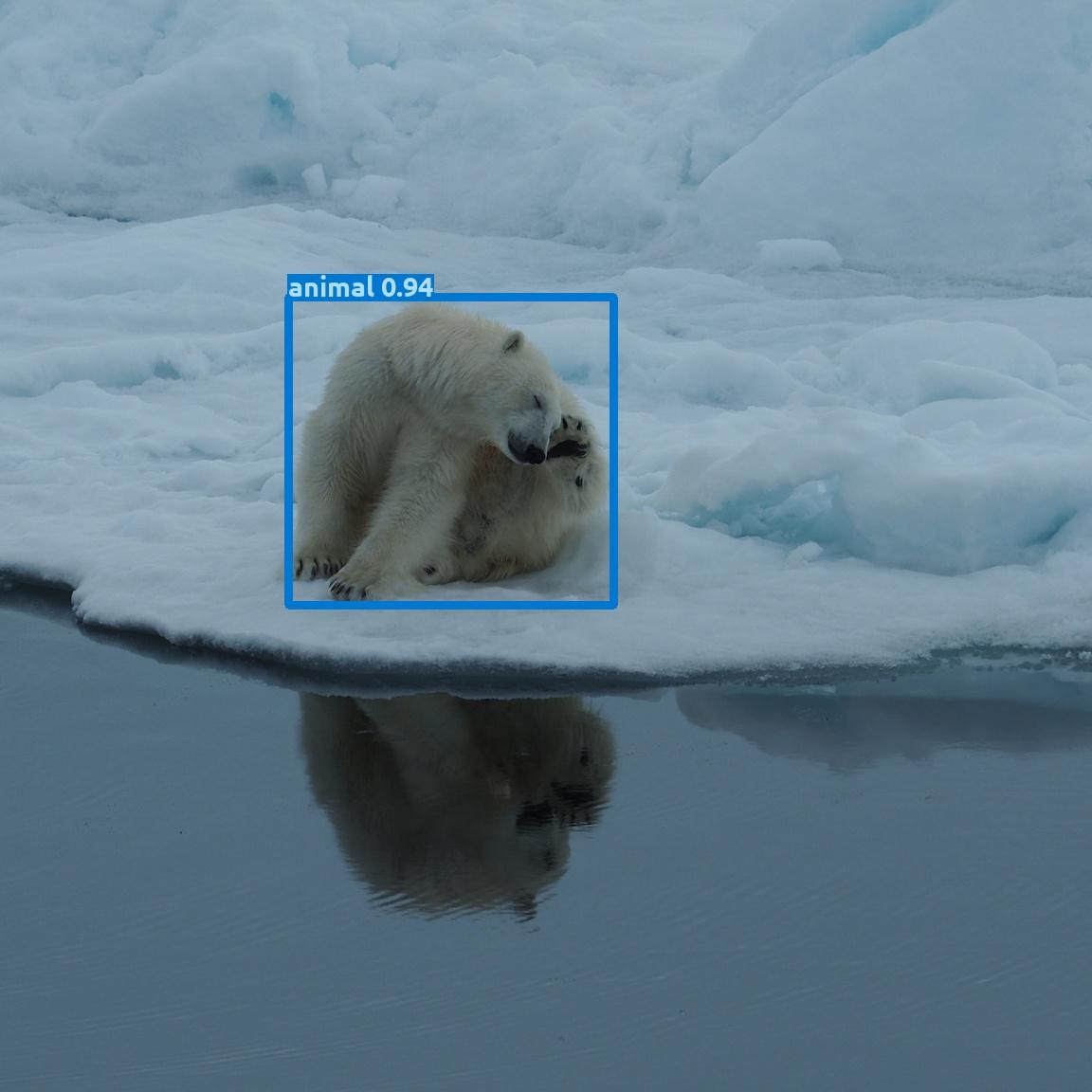
The mirror image confidence drops below my chosen threshold of 0.2 but the non-mirrored image now gets a confidence boost.
Something must be going on with overall scaling under the hood in MD as the targets here have the exact same number of pixels.
I tried resizing to 640x640:
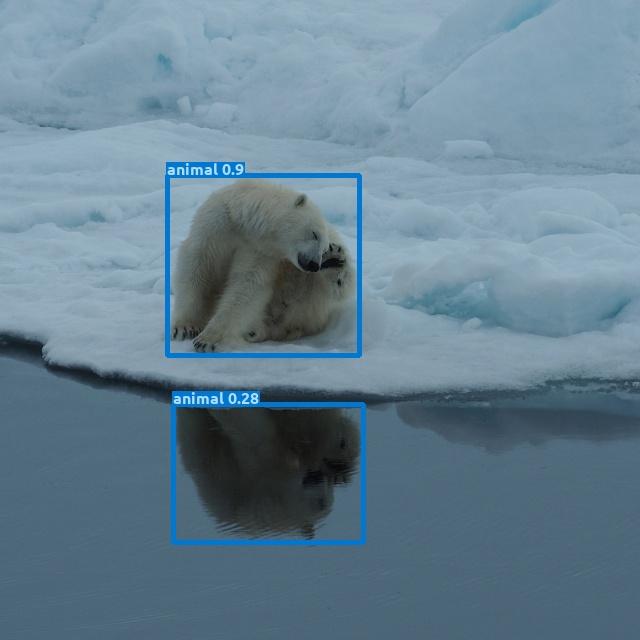
This bumped the mirror image confidence back over 0.2... but lowered the non-mirrored confidence a bit... huh!?
My original hypothesis was that the confidence could be somewhat swapped just by turning the image upside down (180 degree rotation):
Here is the 1152x1152 crop rotated 180 degrees:
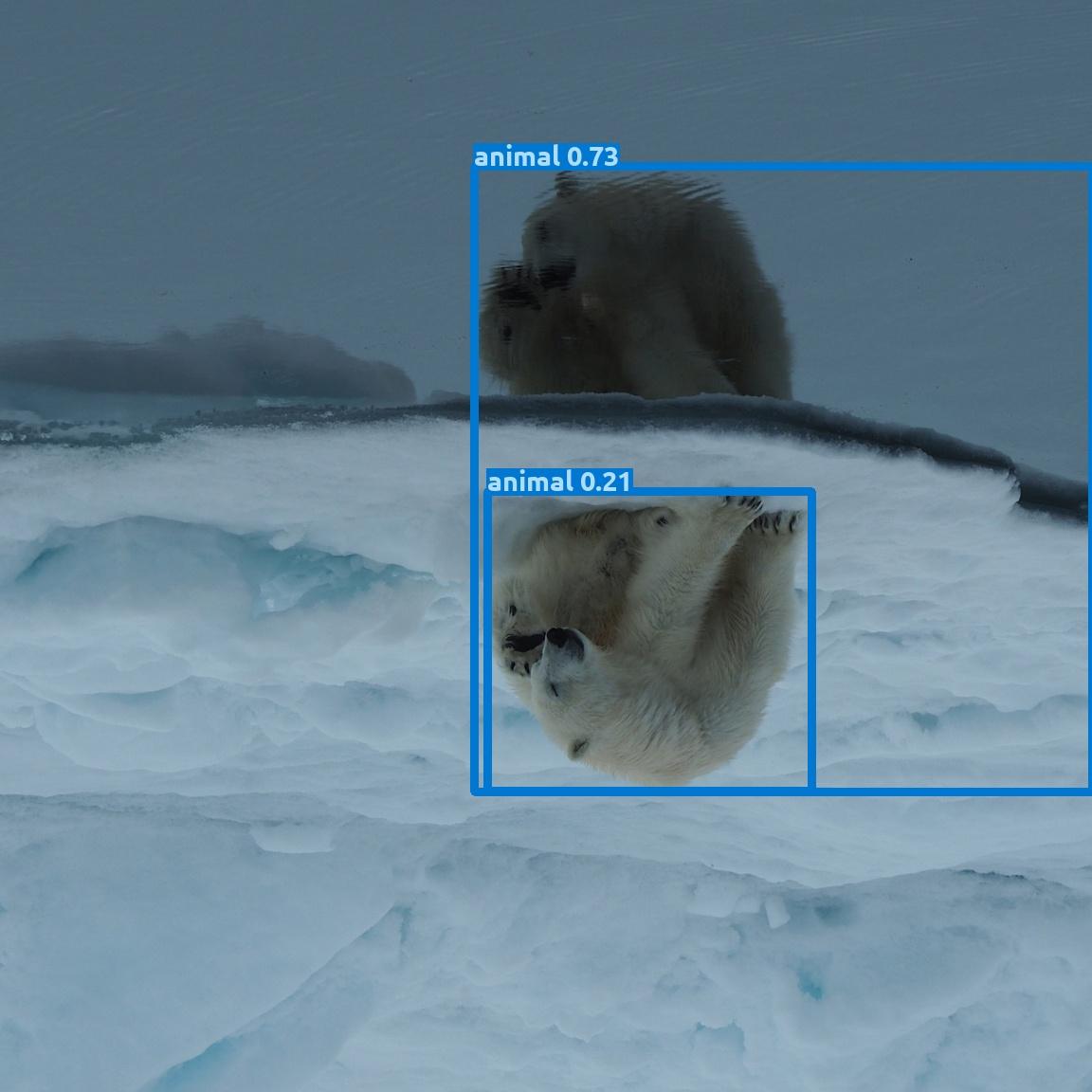
The mirror part now got a higher confidence but it is interpreted as sub-part of a larger organism. The non-mirrored polar bear had a drop in confidence.
So my hypothesis was somewhat confirmed...
This leads me to believe that MD is not trained on many upside down animals ....
- and probably our PolarbearWatchdog! should not be either ... ;)
9 December 2024 4:27pm
Seems like we should include some rotations in our image augmentations as the real world can be seen a bit tilted - as this cropped corner view from our fisheye at the zoo shows.
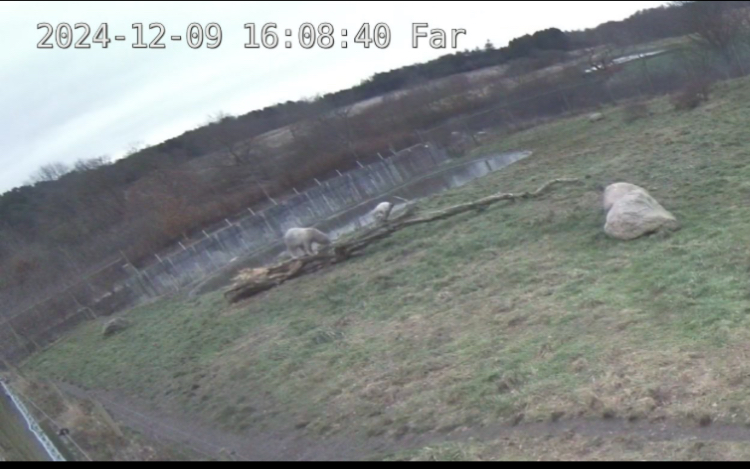
Conservation Data Strategist?
20 November 2024 3:50pm
22 November 2024 2:28pm
Great resources being shared! Darwin Core is a commonly used bio-data standard as well.
For bioacoustic data, there are some metadata standards (GUANO is used by pretty much all the terrestrial ARU manufacturers). Some use Tethys as well.
Recordings are typically recorded as .WAV files but many store them as .flac (a type of lossless compression) to save on space.
For ethics, usually acoustic data platforms with a public-facing component (e.g., Arbimon, WildTrax, etc.) will mask presence/absence geographical data for species listed on the IUCN RedList, CITES, etc. so that you're not giving away geographical information on where a species is to someone who would use it to go hunt them for example.
29 November 2024 12:13pm
Hello, I am experienced in conservation data strategy. If you want to have a conversation you can reach me at SustainNorth@gmail.com.
29 November 2024 5:51pm
Bird Monitoring Data Exchange is a standard often used for birds data.
Recovery Ecology Post Doctoral Associate - San Diego Zoo Wildlife Alliance
26 November 2024 11:47pm
"AI for Conservation" Starter Pack on BlueSky
26 November 2024 4:12pm
High-resolution sensors and deep learning models for tree resource monitoring
25 November 2024 9:14pm
AmazonTEC: 4D Technology for Biodiversity Monitoring in the Amazon (English)
25 November 2024 8:33pm
MegaDetector V6 and Pytorch-Wildlife V1.1.0 !
9 November 2024 3:34am
11 November 2024 7:57pm
Hello Patrick, thanks for asking! We are currently working on a bioacoustics module and will be releasing some time early next year. Maybe we can have some of your models in our initial bioacoustics model zoo, or if you don't have a model yet but have annotated datasets, we can probably train some models together? Let me know what you think!
11 November 2024 7:58pm
Thank you so much! We are also working on a bounding box based aerial animal detection model. Hopefully will release sometime early next year as well. It would be great to see how the model runs on your aerial datasets! We will keep you posted!
22 November 2024 5:13pm
Hi Zhongqi! We are finalizing our modelling work over the next couple of weeks and can make our work availabile for your team. Our objective is to create small (<500k parameters) quantized models that can run on low-power ARM processors. We have custom hardware that we built around them and will be deploying back in Patagonia in March 2025. Would be happy to chat further if interested!
We have an active submission to Nature Scientific Data with the annotated dataset. Once that gets approved (should be sometime soon), I can send you the figshare link to the repo.
Mass Detection of Wildlife Snares Using Airborne Synthetic Radar
7 January 2024 6:50am
26 August 2024 1:14pm
Is thisvfunding grant an opportunity? https://www.dronedeploy.com/blog/expand-your-impact-with-a-grant-from-dronedeploy
24 October 2024 1:39am
Hi David, this is an incredible project. Would you be interested in sharing more of your experience with AI and wildlife conservation with my students? They are currently researching this, and would greatly benefit from speaking with a professional in the field. Thank you for considering!
21 November 2024 4:52pm
Hats off to your team for this absolute game-changing technology!
We rescue stray and wild animals in Taiwan, and the bulk of our work is saving animals maimed by wire snares and gin traps. We've become better at finding the devices, but still not good at all. There's simply too much difficult terrain to cover and we only have eyeballs and hiking sticks to find them. We know roughly where they are because the maimed stray dogs will eventually find their way onto a road and be reported to us. Then we close one of them, set up a trail camera, get the evidence of the poacher in the act of re-setting it, and get him prosecuted and shut down. But we need to be able to scale this greatly.
I've been using a thermal-imaging drone to locate stricken animals and am now considering buying another drone more suited to finding traps and snares. Some newer drones are able to navigate through forest without crashing into thin branches, so I've been looking into equipping one with LiDAR to see if that can detect the devices. But then I came across your YouTube channel and then this post about using airborne synthetic radar, and I'm incredibly excited to see where you might take this incredible technology.
How can we get our hands on the SAR you're using? It's 3 kg, right? I'm wondering if I could fit it to a suitable drone. If it works above forest canopy to detect traps and snares on the forest floor, then I can use a load-carrying drone instead of a light obstacle-avoidance drone.
If you made the SAR yourselves, then maybe think about crowdfunding for your project. I'd happily pledge funds if it meant I could get my hands on the kind of equipment you're using.
I can't tell you how happy I am thinking about all the animals' lives you'll save with this. Don't just remove the snares—gather evidence and put the poachers out of business too!
Computer Vision Developer
20 November 2024 10:39pm
Instant Detect 2.0 and related cost
16 November 2023 12:50am
11 November 2024 9:16am
Sam any update on Instant Detect 2.0 - previously you mentioned that you hope to go into volume production by mid-2024?
I would love to also see a comparison between Instant Detect 2.0 and Conservationxlabs' Sentinel products if anyone has done comparisons.
Are there any other similar solutions currently on the market - specifically with the images over LoRa capability, and camera to satellite solution?
11 November 2024 6:41pm
Nightjar comes to mind but I am not too sure if it is actually “on the market”…
19 November 2024 6:44pm
There's quite a few diy or prototype solutions described online and in literature - but it seems none of these have made it to market yet as generally available fully usable products. We can only hope.
AI Animal Identification Models
30 March 2023 5:01am
6 November 2024 6:50am
I trained the model tonight. Much better performance! mAP has gone from 73.8% to 82.0% and running my own images through anecdotally it is behaving better.
After data augmentation (horizontal flip, 30% crop, 10° rotation) my image count went from 1194 total images to 2864 images. I trained for 80 epochs.
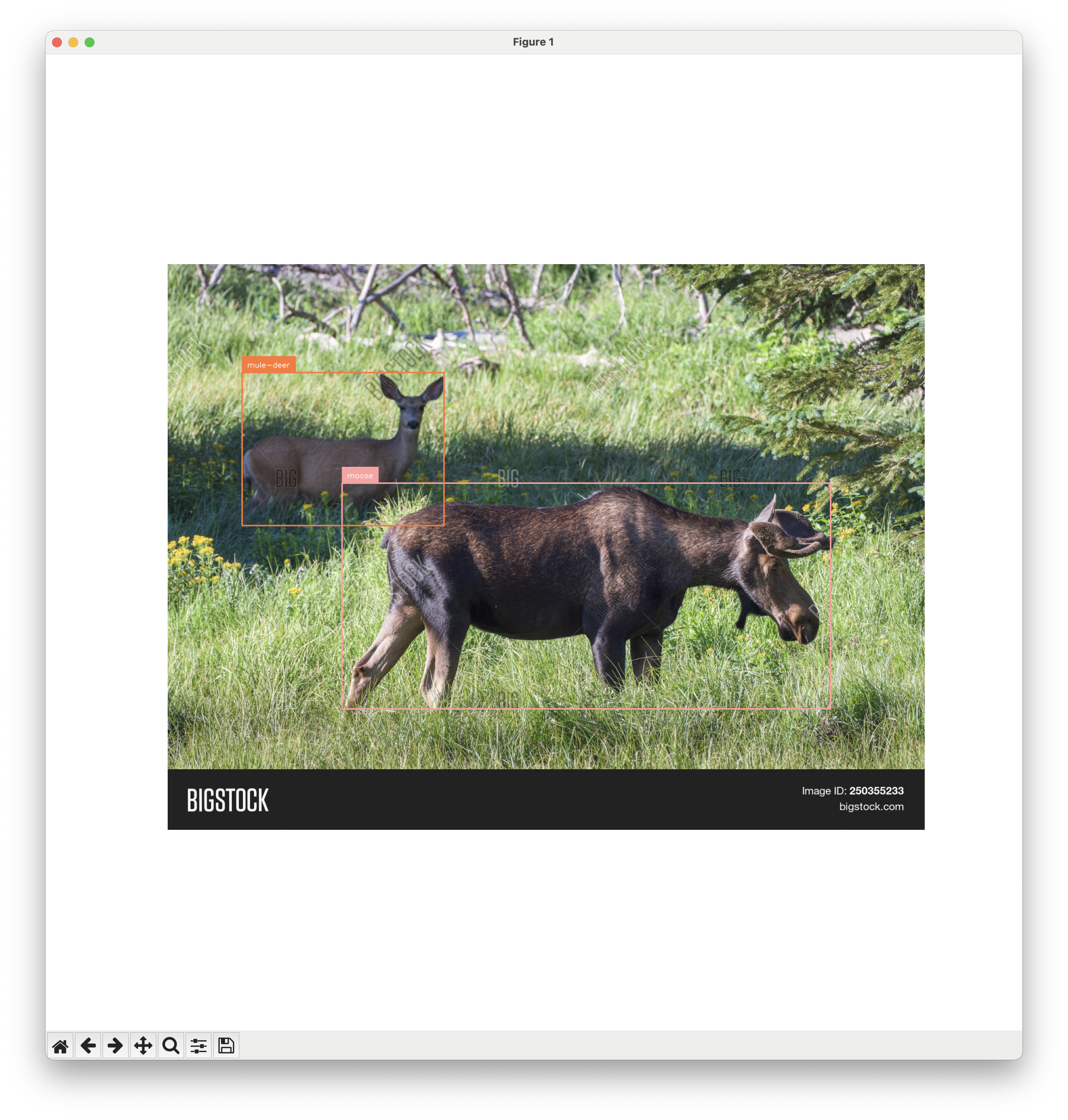
6 November 2024 8:56am
Very nice!
I thought it would retain all the classes of YOLO (person, bike, etc) but it doesn't. This makes a lot of sense as to why it is seeing everything as a moose right now!
I had the same idea. ChatGPT says there should be possibilities though...
You may want to explore more "aggressive" augmentations like the ones possible with
Albumentations Transforms
A list of Albumentations transforms
to boost your sample size.
Or you could expand the sample size by combining with some of the annotated datasets available at LILA BC like:
Caltech Camera Traps - LILA BC
This data set contains 244,497 images from 140 camera locations in the Southwestern United States, with species-level labels for 22 species, and approximately 66,000 bounding box annotations.
North American Camera Trap Images - LILA BC
This data set contains 3.7M camera trap images from five locations across the United States, with species-level labels for 28 species.
Cheers,
Lars
15 November 2024 5:30pm
As others have said, pretty much all image models at least start with general-subject datasets ("car," "bird," "person", etc.) and have to be refined to work with more precision ("deer," "antelope"). A necessity for such refinement is a decent amount of labeled data ("a decent amount" has become smaller every year, but still has to cover the range of angles, lighting, and obstructions, etc.). The particular architecture (yolo, imagenet, etc.) has some effect on accuracy, amount of training data, etc., but is not crucial to choose early; you'll develop a pipeline that allows you to retrain with different parameters and (if you are careful) different architectures.
You can browse many available datasets and models at huggingface.co
You mention edge, so it's worth mentioning that different architectures have different memory requirements and then, within the architecture, there will generally be a series of models ranging from lower to higher memory requirements. You might want to use a larger model during initial development (since you will see success faster) but don't do it too long or you might misestimate performance on an edge-appropriate model.
In terms of edge devices, there is a very real capacity-to-cost trade-off. Arduinos are very inexpensive, but are very underpowered even relative to, e.g., Raspberry Pis. The next step are small dedicated coprocessors such as the Coral line (). Then you have the Jetson line from NVidia, which are extremely capable, but are priced more towards manufacturing/industrial use.
Products | Coral
Helping you bring local AI to applications from prototype to production
Q&A - AI for Conservation Office Hours 2025
 Jake Burton
and 1 more
Jake Burton
and 1 more
15 November 2024 11:20am
What new languages, tools, and frameworks are you excited about?
14 November 2024 6:58pm
Job alert: ML identification of frog species from audio
13 November 2024 11:31pm
Apply Now: AI for Conservation Office Hours 2025
 Jake Burton
and 1 more
Jake Burton
and 1 more
13 November 2024 11:31am
Using AI, barriers and bridges to help stop wildlife-vehicle collisions
12 November 2024 2:03pm
12 November 2024 6:50pm
13 November 2024 6:44am
Looking for feedback & testers for Animal Detect platform
6 November 2024 9:39am
6 November 2024 9:57am
Hi Eugene!
Interesting project!
I already signed up to test it!
Cheers,
Lars
Post Doctoral Associate - San Diego Zoo Wildlife Alliance
1 November 2024 6:49pm
What AI object detectors really see
31 October 2024 11:02am
31 October 2024 10:24pm
ChatGPT tells me:
While YOLO has advanced capabilities in object detection by integrating both global outlines and textures, it still faces challenges when these visual cues are compromised. The model's performance can degrade in scenarios where objects are presented in abstract forms lacking clear outlines or distinctive textures.
1 November 2024 6:48am
Very interesting Lars. Clearly there are some fun experiments we can do. The comment above is interesting, it suggests that there might be quite some merit in the detail enhancement algorithms that some thermal cores can do. More testing to do :) My personal feeling is that the detail that it eventually learns is a lot more basic than one things. That being the case there are likely a lot of simple ways to fool it, but now I've been challenged to make and test some examples I see.
1 November 2024 1:45pm
I am certainly a somewhat vertical thing with a lump on top, so I get it...
Getting a Software Job in Conservation
25 October 2024 9:18pm
Training datasets for counting Grey Seals in UAV imagery
21 October 2024 3:28pm
21 October 2024 4:50pm
Hi Sarah!
This paper mentions seals (not sure if they are grey seal though)
The dataset is listed here:
List of other conservation data sets - LILA BC
LILA BC - List of other conservation-related data sets
and can be found here:
WAID/WAID/images at main · xiaohuicui/WAID · GitHub
Wildlife Aerial Images from Drone. Contribute to xiaohuicui/WAID development by creating an account on GitHub.
Cheers,
23 October 2024 8:23pm
That's great, thanks Lars!
PolarBearWatchdog! Advancing Arctic Safety with an AI-driven Polar Bear Detection System
19 October 2024 3:19pm
23 October 2024 7:27am
I did a short presentation on our work with the polar bear alarm in the Wildlabs Variety Hour October 30th.
It can be found here : https://www.youtube.com/watch?v=zr2Q8bUJZ8U
pyeogpr - Python based library that uses Earth Observation data to retrieve biophysical maps using Gaussian Process Regression
20 October 2024 6:13pm






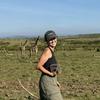











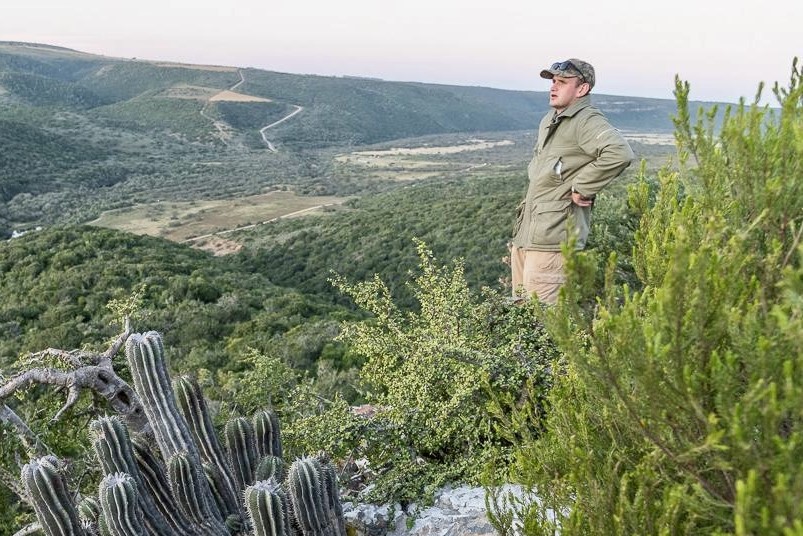












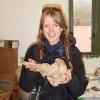




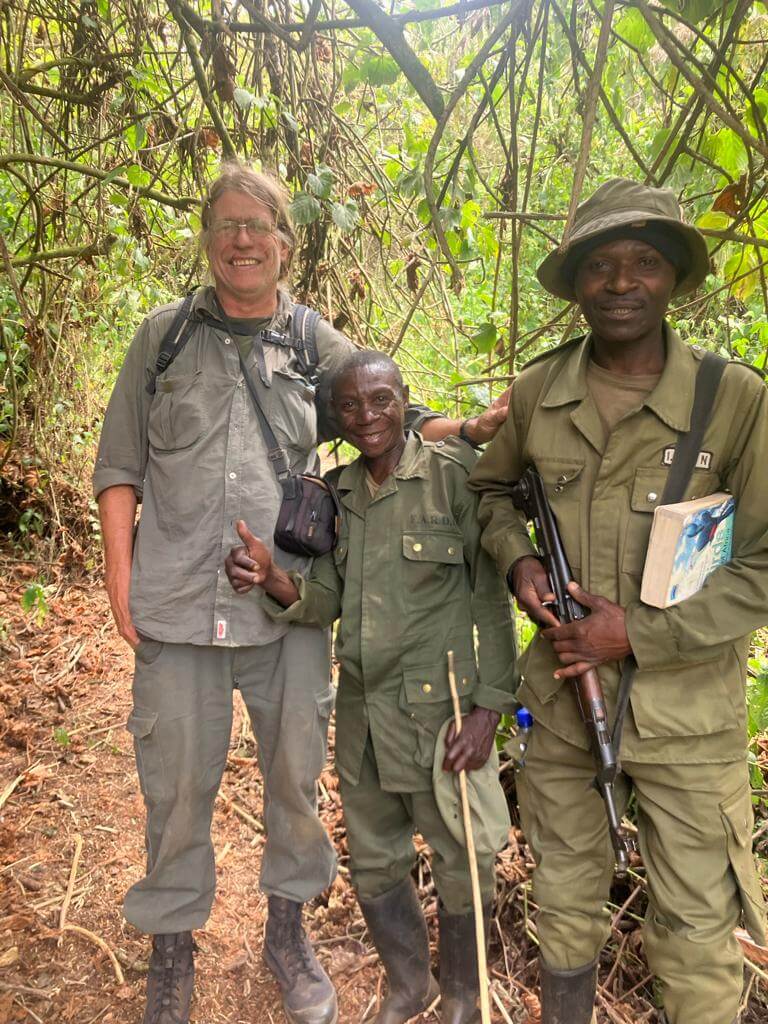
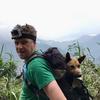





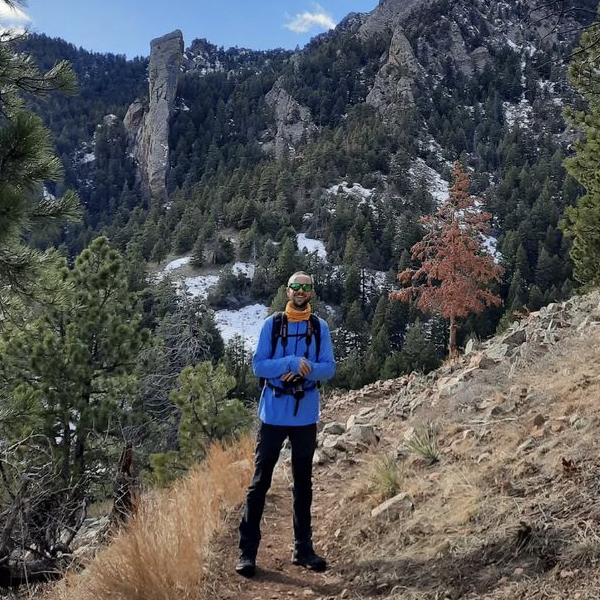



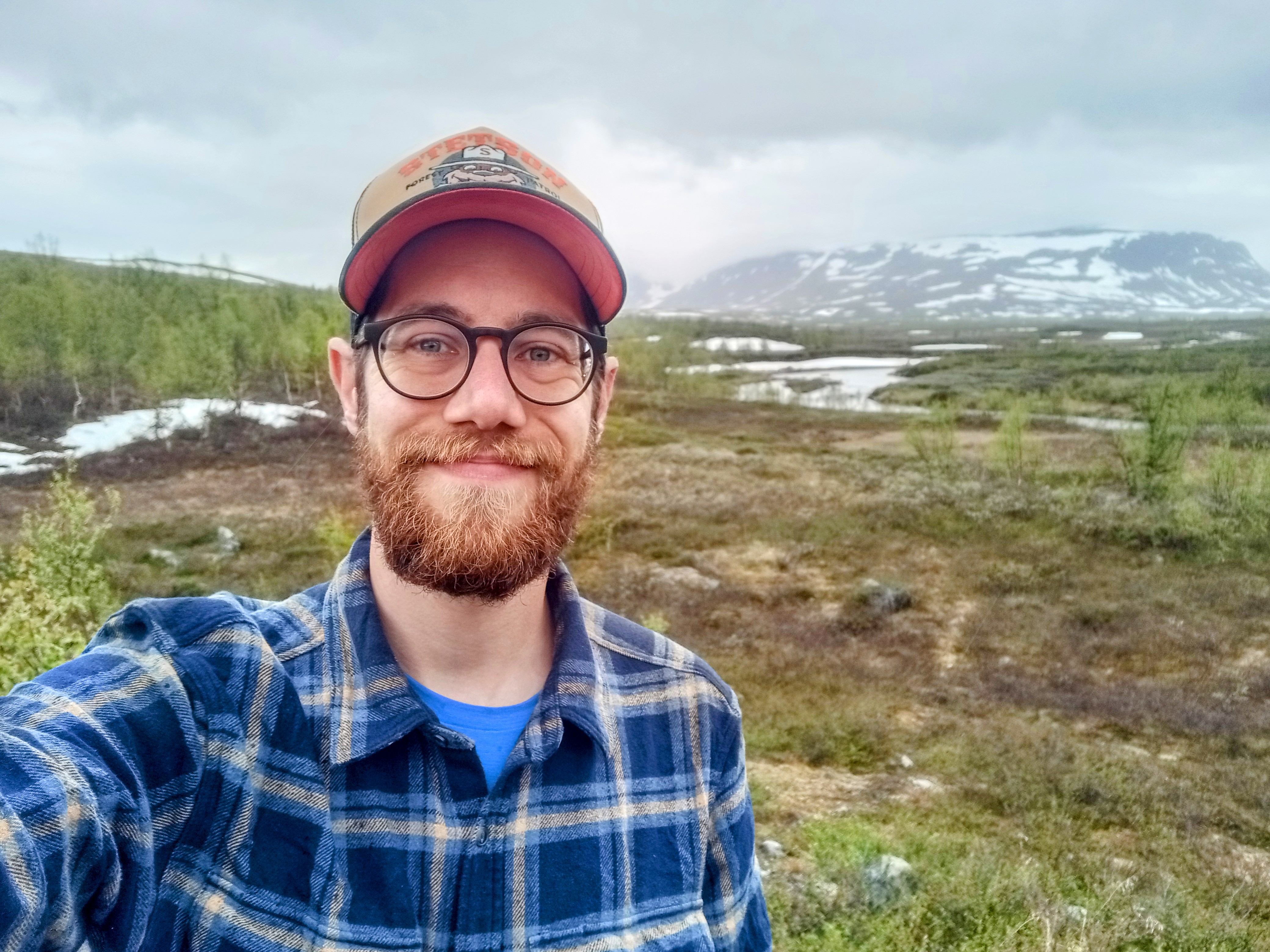










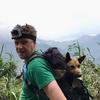







16 December 2024 1:25pm
Oh there we go, you are selling this setup? Really cool!!!
Great Idea, just posted my requirements here:
lets see if I can find my dreamsolution.